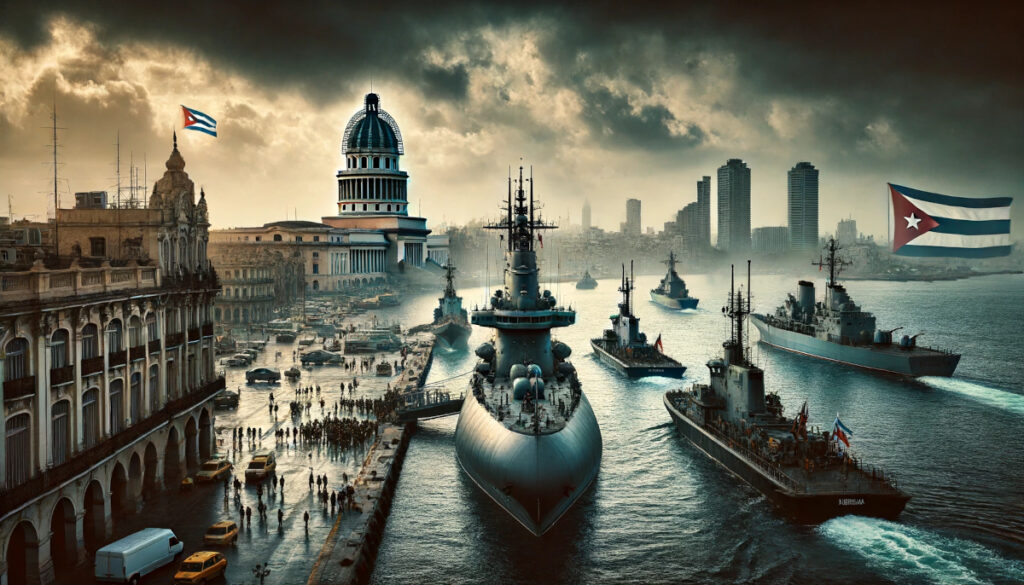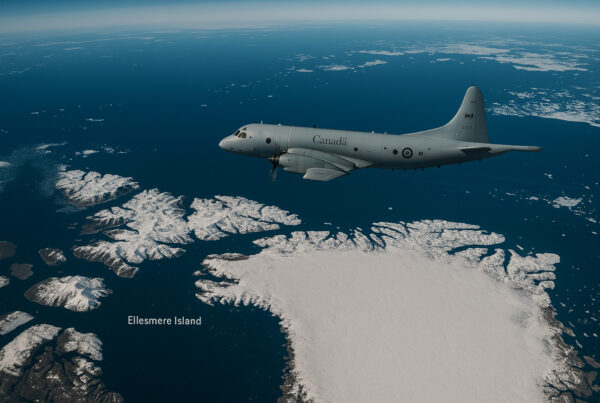 Russian warships arriving in Cuba (DALL-E)
Russian warships arriving in Cuba (DALL-E)
Onlookers and fishermen crowded the seafront, captivated by the sight of Russian vessels arriving in Havana’s harbor. Members of the small Russian community in Cuba and Russian diplomats, waving national flags, welcomed the crews with enthusiasm. For many Cubans, this was their first time witnessing a submarine entering Havana Bay.
The arrival of four Russian ships marks the largest display of Russian naval power with their long-time ally Cuba in many years. According to a US official, the Kazan does not carry nuclear weapons. The ships are set for a five-day official visit to the Caribbean island, a clear demonstration of Russian force just 90 miles from Florida, amid escalating tensions between the US and Russia over the war in Ukraine.
In a gesture of goodwill, Cubans will be allowed to tour the frigate following the convoy’s arrival, as confirmed by a Russian diplomatic source. Starting Thursday, “the general public” in Cuba can explore the Gorshkov frigate for four hours each day over three days. Military analysts highlight the frigate’s capabilities for long-range missions, anti-submarine warfare, and its arsenal of surface-to-surface and surface-to-air missiles, among other advanced weapon systems.
US and Canadian Military Response
On their journey to Cuba, the Russian warships conducted drills in the Atlantic, the Russian Ministry of Defense announced. Crews from the frigate and the nuclear submarine missile cruiser practiced high-precision missile targeting using computer simulations, identifying simulated enemy ship groupings over 600 km away.
US officials revealed that the US military deployed ships and planes to monitor Russia’s military exercises in the Atlantic and Caribbean. The USS Truxtun, USS Donald Cook, and Coast Guard vessel USCGC Stone have been tracking the Russian vessels. Additionally, a P-8 Poseidon reconnaissance plane was deployed to surveil from above. Canada has also contributed assets to monitor the activity.
The US has been closely monitoring the flotilla’s movements, which is standard for the country’s maritime homeland defense. All vessels, including the Russians, have remained in international waters. Pentagon and State Department officials emphasized that the Russian activity is routine and poses no threat to the US, noting that Cuba has hosted Russian ships annually from 2013 to 2020.
Historical Context and Current Implications
Cuba stated last week that such visits are standard practice by naval units from friendly countries and do not pose a threat to the region. “Visits by naval units from other countries are a historical practice of the revolutionary government with nations that maintain relations of friendship and collaboration,” said a statement from Cuba’s Foreign Ministry. The Cuban Armed Forces Ministry also confirmed that none of the Russian ships are armed with nuclear weapons.
Cuba has maintained strong relations with Russia, dating back to its alliance with the Soviet Union during the Cold War, which included hosting nuclear missiles during the 1962 Cuban Missile Crisis. The arrival of these ships signals Moscow’s strengthening ties with Havana amid Russia’s ongoing war in Ukraine. As Cuba faces its worst economic crisis in decades, it is increasingly reliant on Russian oil and aid.
This display of Russian naval power so close to US shores comes at a particularly tense moment, following President Joe Biden’s recent approval for Ukraine to strike inside Russia using US-provided weapons. While officials downplay the immediate threat, the presence of Russian warships in Cuban waters evokes historical tensions and underscores the shifting dynamics in international relations.








